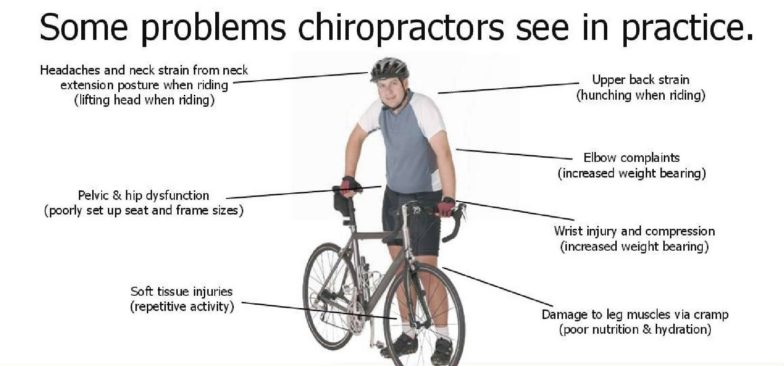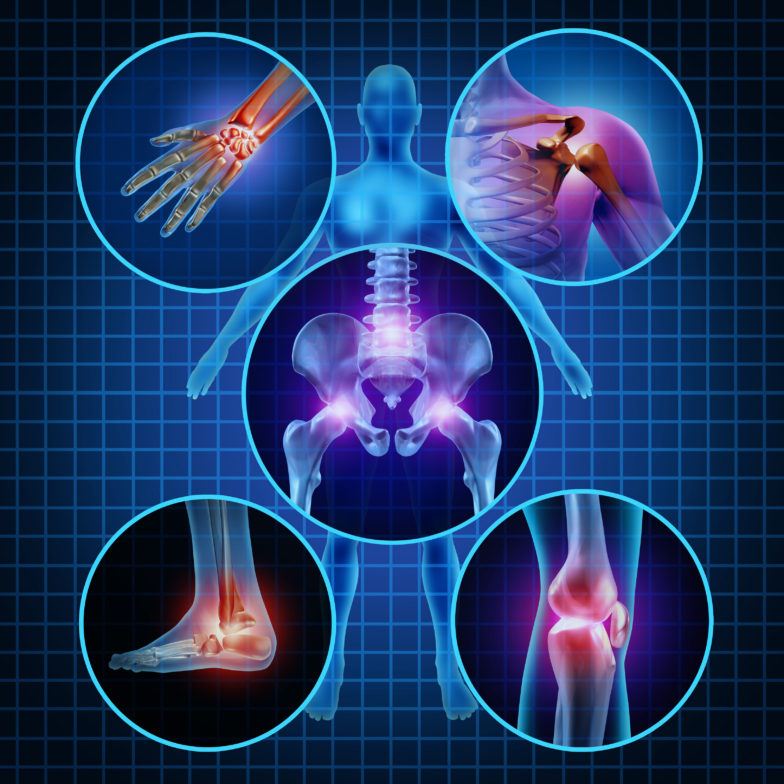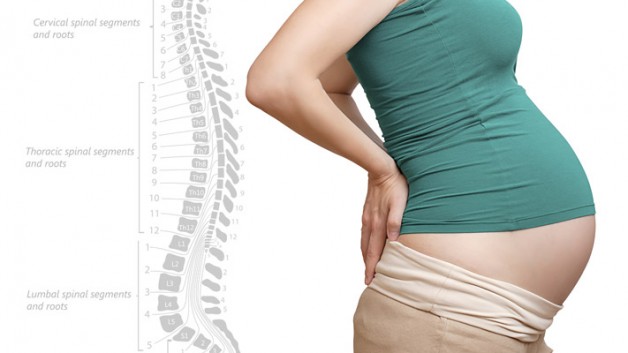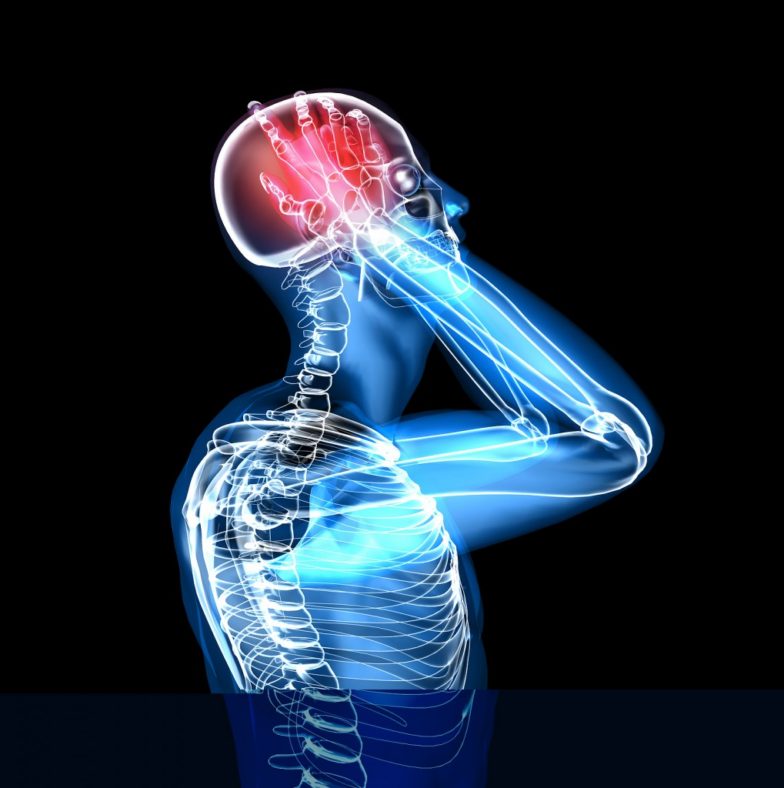High Heels
• Try not to stand for too long at any one time in high heels
• When sitting, remove your shoes and stretch out your feet
• Carry flat shoes with you in your bag, so you can swap shoes when walking long distances
• Remove your shoes when in the house and wear flat slippers
• Avoid open back or slide-on shoes that require toe gripping. This can result in hammer toes and foot tension.
• While the ideal height is no heel, a two-inch heel will cause less pain or damage than higher ones.
• Regularly visit a Chiropractor
Cycling Injuries and Chiropractic
– Neck pain due to facet joint irritation, pinched nerves or strain to posterior neck muscles
– Shoulder pain
– Wrist and hand pain
– Knee pain
**Research conducted on behalf of the British Chiropractic Association in March 2013 of 432 UK adults.
Back Pain and Gardening
What’s Your Posture Like?
Are You Sitting Too Much?
You’d have thought sitting down would be good for your back. Surely taking the pressure off when you’ve been walking about gives your body a bit of a rest? Unfortunately, nothing could be further from the truth.
Sitting down for long periods has been shown to cause many physical problems, including back pain. This is particularly acute if you work in an office or are seated for the majority of the day.
It’s alarming how long we sit without moving at all. A study for BUPA found only one in five workers left their desk during the day to get a drink or go to the toilet (1). Which means an unbelievable 80% of people stay exactly where they are for their entire working day. All day, off their feet. Add into this equation that a lot of people then spend most of their leisure time on the sofa in front of the TV and you have a worryingly sedentary outcome. By contrast, the British Chiropractic Association recommends you don’t sit for more than 30-40 minutes at a time.
Sitting for long periods can weaken the back muscles, making it harder for your back to work properly. This isn’t a problem just for office workers and the elderly. Recent research from the British Chiropractic Association shows 40% of 16 to 34 years olds who said they had experienced back or neck pain spent the majority of their time ‘mainly sitting’, while 32% reported back pain was triggered by sitting still for long periods of time. Sitting is not only bad for your back, it has negative effects on your overall health.
Why sitting is bad for more than just your spine!
What can I do to prevent back pain caused by sitting? Aside from taking a job which requires you to be on your feet most of the day, undoing the effects of being seated for so many hours isn’t easy. Our advice is to avoid or minimise sitting as much as possible.
• Stand up while you are on the phone. Better yet, pace!
• Walk more around your house.
• Take the stairs.
• Walk after you eat lunch.
• Park your car farther away from your destination. Don’t look for that perfect spot up close.
• Take the long route!
• Get vigorous about your daily cleaning and cooking.
• Work your calves when you brush your teeth!
• Stand up and stretch when you’re at your computer a lot.
• Don’t send emails if the recipient is in walking distance. Get up, walk and talk.
• Stand up or do exercises while watching TV.
• Consider a standing workstation.
• Refill your water glass every hour.
• Reduce television and home computer use. Try recording programmes to allow you to fast forward the advertising.
1. Get Away From Your Desk – British Chiropractic Association http://www.chiropractic-uk.co.uk/get-away-from-your-desk-207-news.aspx
2. Don’t sit back – British Chiropractic Association http://www.chiropractic-uk.co.uk/dont-sit-back-196-news.aspx
3. Sitting for long periods ‘is bad for your health’ – BBC http://www.bbc.co.uk/news/health-19910888
4. Sitting time and all-cause mortality risk in 222,497 Australian adultshttp://archinte.jamanetwork.com/article.aspx?articleid=1108810
Chiropractic – Helping People With Arthritis
Arthritis is a painful and debilitating condition and can have a significant impact on the quality of life of individuals suffering from this disease.
A study published in the Annals of Internal Medicine(i) reported that 63% of patients who visited a rheumatologist for rheumatoid arthritis, osteoarthritis and fibromyalgia conditions also sought some form of complementary and alternative medicine (CAM). Of these individuals 31% (almost half) chose Chiropractic care, making Chiropractic the most popular alternative used by this group of people. Importantly, 73% of these patients determined that Chiropractic care was helpful in controlling their chronic pain.
An additional aspect of this study was to determine why these arthritic patients chose CAM and the reasons they gave are somewhat typical; (1) because their prescribed medication wasn’t working to control pain (2) because they heard it would help; (3) because it is safe; (4) because it helped someone they know.
Reducing the use of prescription medicines or over-the-counter medications such as NSAIDs for pain relief means fewer harmful side effects and addiction from long term use. The lifestyle changes associated with chiropractic recommendations will also positively influence diet, exercise and overall health.
The ability to control some symptoms through Chiropractic care not only reduces the financial burden on the NHS (arthritis cases are set to double by 2030!) but more importantly it improves the quality of life of those suffering from the disease and may in some cases delay the necessity to take early retirement.
(i) Rao JK, Mihaliak K, Kroenke K, Bradley J, Tierney WM, Weinberger M. Use of complementary therapies for arthritis among patients of rheumatologists. Ann Intern Med 1999; 131:409-416
TMJ Syndrome / Jaw Pain
The Temporomandibular Joint
If you place your fingers in front of either ear and open your jaw, you’ll feel changing shapes beneath your fingers. You are feeling the joint where the temporal bone of your skull attaches to your mandible (jaw)-the joint that is called the temporomandibular joint or TMJ. This fascinating joint connects your jaw to your head. Ligaments, cartilage, fascia, an articular disc, muscles, nerves and blood vessels run in, around and through the TMJ.
Symptoms of TMJ Syndrome
TMJ dysfunction or syndrome occurs when the joint is misaligned or malfunctioning in some way that subjects it to excess pressure. Among the most common symptoms of TMJ dysfunction are the inability to open the mouth wide and a clicking or popping sound when the mouth opens or closes. In some cases, the jaw can even temporarily lock up.
Other TMJ symptoms can be severe headaches; loss of hearing; tinnitus (ringing in the ears); the sensation of an object in the throat; facial swelling; shoulder, cheek or jaw joint pain; neck ache; tic douloureux (facial nerve pain); pain in or under the ear, the eye or upon swallowing; tooth pain; migraine: nausea; blurred vision and dizziness.
Some researchers have even linked TMJ dysfunction to throat infections, sinus congestion, ear infections and asthma. Others have linked the syndrome to heart, stomach, intestinal, respiratory and emotional disorders.
Who Gets TMJ?
According to John D. Laughlin 111, president of the Holistic Dental Association:
Up to seventy-eight percent of the general public (over 175 million) have some amount of TMJ dysfunction. This condition can begin during the birth process. One of the primary causes can be poor nutrition. TMJ affects more women than men, with high stress “superwomen” being very prone to it.
Causes of TMJ
TMJ may be caused by trauma: a child may fall on its sacrum and in time, through the adaptive body mechanisms, the pelvic imbalance can affect the TMJ, head and neck. According to Dr. Gerald Smith, a specialist in the field of structural dentistry, dental work, especially improperly fitting braces or orthodontia is the cause of many TMJ problems:
Chronic headaches, scalp tenderness, pains behind the eyes, muffled ear sounds, ringing, hissing or other ear distortions, balance problems, nausea, facial tightness, cervical or lower back pain or restriction of neck motion should all be thoroughly investigated for possible implication in cranial distortions, especially if they appear within days after braces are placed. These same symptoms may surface within a period of six months to several years. Sometimes the head pains caused by ill-fitting dental work can be quite intense. TMJ may also be caused by trauma of many kinds, not only those directly affecting the head and jaw and not only those of recent origin.
The Chiropractic Approach
Spinal and TMJ problems are often found together. Chiropractic care, especially in the area of the upper cervical spine and skull, often relieves pressure on the spine and the cranial bones. Often a chiropractic spinal adjustment can greatly benefit someone suffering from what had been thought to be only a TMJ problem. Conversely, an unhealthy skull/jaw alignment can put great stress upon the spinal column. There are documented cases of dental problems that, once corrected, have helped chiropractic patients to better hold their spinal adjustments.
In one study, 30 chronic TMJ sufferers were randomised into 3 groups (two had chiropractic and one was a control). The groups receiving chiropractic care had the most significant relief from pain. In another study, sixty patients with chronic cervical pain were divided into chiropractic and control groups. There was a dramatic improvement in TMJ pain in the chiropractic group compared to the control group. Eleven patients with chronic TMJ revealed a shift from high-intensity to low-intensity pain between the beginning and end of care (63.6% to 18.2%). A significant change of mouth opening range was also observed.
An individual case involved a 41-year-old woman with bilateral TMJ pain, ear pain, tinnitus, vertigo, decreased hearing and a sensation of pressure or fullness in both ears. She also had a 22 year history of migraine headaches. Prescribed antibiotics caused gastric upset and vomiting. MDs told her to apply local heat, reduce talking and eat soft foods. Her symptoms worsened. Chiropractic care to the atlas vertebrae resulted in complete relief of TMJ symptoms after 9 visits and headache relief. At a one year follow-up she reported no TMJ symptoms and no headaches for the prior 9 months.
In Conclusion
Certain chiropractic and body alignment techniques have been developed that analyze skull/jaw/spinal structural relationships. These techniques have benefited patients suffering from the hidden distortions that sometimes arise within us.
All TMJ sufferers should have a chiropractic checkup, and anyone who has been to the dentist should follow up that visit with a quick stop at their chiropractor.
Chiropractic for Fertility, Pregnancy and Post Birth
Did you know chiropractic has many benefits before, during and after pregnancy?
BEFORE you become pregnant, your doctor of chiropractic can detect any imbalances in the pelvis or elsewhere in your body that could contribute to pregnancy discomfort or possible neuromusculoskeletal problems after childbirth.
Chiropractic may even help with infertility issues. The nerves that regulate and control your reproductive system exit from the spine. If there is any type of distortion or interference in those nerves that keeps them from working properly, infertility may result. A study published in the peer-reviewed Journal of Vertebral Subluxation Research looked at the effectiveness of chiropractic for infertility. It followed 15 women who ranged in age from 22 – 65 with a history of infertility. 14 of the 15 subjects became pregnant within 2 – 20 months of starting chiropractic care. The 65-year-old did not get pregnant, but after a lifetime with no menstrual periods, she began menstruating 4 weeks after beginning chiropractic adjustments.
DURING PREGNANCY many pregnant women have found that chiropractic adjustments provide relief from the increased low-back pain brought on by pregnancy. Chiropractic adjustments are extremely safe for mum and baby and can be especially helpful when trying to avoid medications in treating back pain. Another goal is to help prepare the body for birth by releasing the soft tissues around the pelvis which can restrict the baby’s position. The Webster technique can also help encourage a breech baby to turn into the correct position.
According to recent studies, chiropractic care may result in easier pregnancy including increased comfort during the third trimester and delivery and reduced need for analgesics (pain medication). In one study, women receiving chiropractic care through their first pregnancy had 24% reduction in labour times and subjects giving birth for the second or third time reported 39% reduction in shorter labour times. In another study, the need for analgesics was reduced by 50% in the patients who received adjustments. In addition, 84% of women report relief of back pain during pregnancy with chiropractic care. When women receive chiropractic care throughout pregnancy, the sacroiliac joints of the pelvis function better. As a result, there is significantly less likelihood of back labour (contractions and sharp pain felt in the lower back during labour). Chiropractic care has helped new mothers become more comfortable breastfeeding (posture-wise) as well as to produce more milk.
AFTER BIRTH it’s also important to get yourself checked within 8 weeks of giving to avoid developing problems in the future. This is due to the effects of relaxin, the hormone which is released to allow your joints to relax so you can give birth more easily. Over the 6-8 weeks following birth your relaxin levels return to normal and your joints stiffen up again. This is why it’s important to make sure your body is in the correct alignment as often over time joints that have stiffened in the wrong place lead to lower back pain and problems in the future.
Do You Have a Splitting Headache?
If you have a headache, you’re not alone. Nine out of ten people suffer from headaches. Some are occasional, some frequent, some are dull and throbbing, and some cause debilitating pain and nausea.
New research shows that spinal manipulation – the primary form of care provided by doctors of chiropractic – may be an effective treatment option for tension headaches and headaches that originate in the neck.
Chiropractic gives relief to many headache sufferers, not only in our practice but also in several studies. One study found that the majority of people who suffered from spinal misalignments had their headaches relieved or their condition improved through chiropractic care. And in follow-up studies of the same patients it was found that many were still without recurring headache pain two years later.
The greatest majority of primary headaches are associated with muscle tension in the neck. Today, people engage in more sedentary activities than they used to, and hours are spent in one fixed position or posture, like sitting in front of the computer for hours. This can increase joint irritation and muscle tension in the neck, upper back and scalp, causing your head to ache. If you are suffering from headaches, please see a chiropractor. Chiropractic has been proven to help headaches, it’s what we do!
Please feel free to contact the clinic on 028 9186 2114 for advice or to arrange an appointment.














